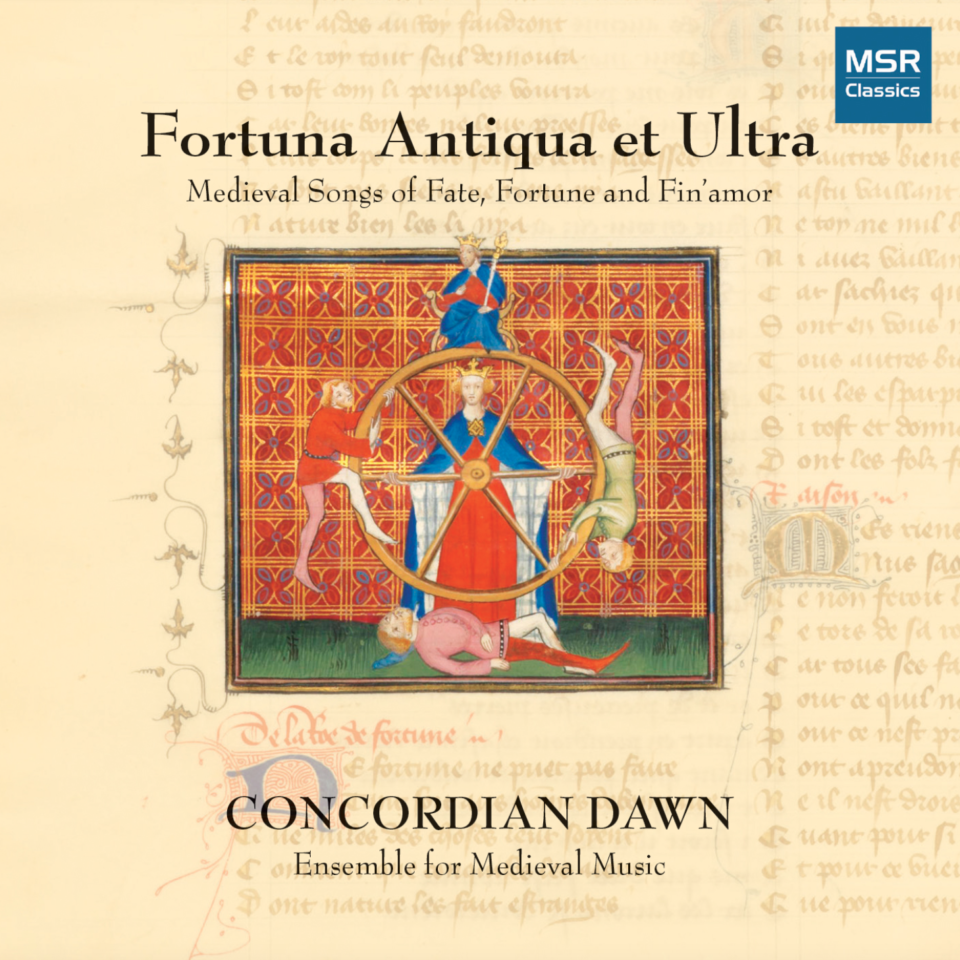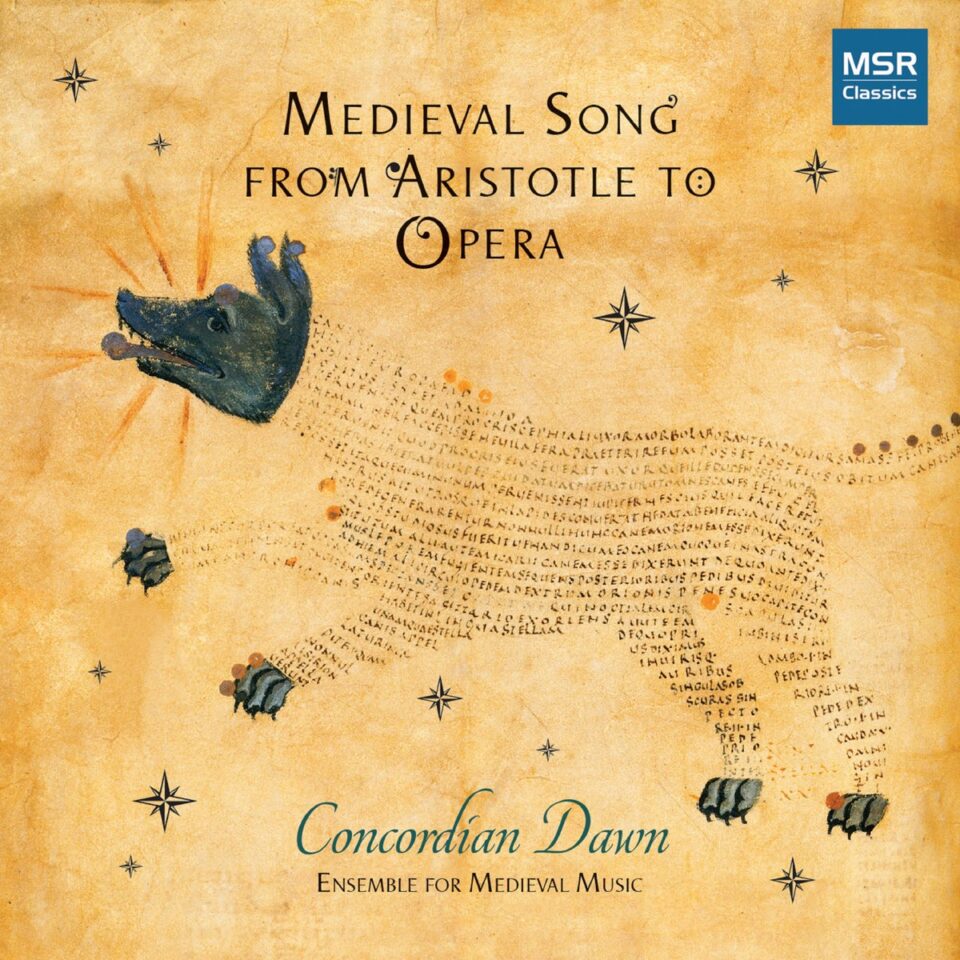FORTUNA ANTIQUA ET ULTA
Medieval Songs of Fate, Fortune and Fin’amor
Gace Brulé, Adam De La Halle, Blondel De Nesles, Philippe De Vitry, Guillaume Dufay, Gaucelm Faidit, Audefroi Le Bastart, Guillaume De Machaut
Fortuna Antiqua et Ultra was first performed in 2018 at a Gothic Arts Interdisciplinary Symposium hosted by the University of Pennsylvania. The symposium’s opening description contained a quote from Thomas Aquinas: “Art is the imitation of nature. Works of art are successful to the extent that they achieve a likeness of nature.” It is in this vein that our program has developed since its nascent performance, evolving in scope against a backdrop of turbulent political machinations and global health crisis. The last year has given us all ample time to reflect on the quality of our own lives and the turbulent peaks and valleys fortune brings. While the pandemic at hand has presented many of us with such large-scale difficulty for the first time in our lives, individuals living in the Middle Ages were no strangers to trying times, and this is well-documented in primary source material. Manipulating every aspect of life and love, Goddess Fortuna has provided poet, composer, and artist alike with subject matter for ages. Fortune’s iconic wheel, lifting the fallen and casting down the mighty based on nothing but an ever-changing whim, is a familiar trope – no less relevant today than it was in the Middle Ages. Fortuna Antiqua et Ultra centers around texts that depict struggle, coping, and resilience during life’s trying times viewed through a medieval lens.
Founded in 2012, Concordian Dawn specializes in 12th- through 14th-century vocal repertoire, drawing on primary source material and focusing on socio-philosophical similarities between texts from centuries ago and the mindset of modern society. In so doing, the ensemble produces a musical experience accessible to contemporary audiences, relating the human condition of the past to the familiar experiences of the present. Concordian Dawn performs regularly on the east coast, and has performed annually with the Gotham Early Music Scene in New York. The ensemble, which received a 2020 Ensemble Forward Award from Chamber Music America, and its director, Christopher Preston Thompson, have performed and led workshops and lectures for Princeton University, New York University, the University of Pennsylvania, the Modern Language Association, the CUNY Graduate Center and the Medieval Academy of America, among others.
Anonymous (13th c.), F-Pn fr. 844, 104v
La Septime Estampie Real
Philippe de Vitry (1291-1361), F-Pn fr. 146, 41v-42r
Tribum que / Quoniam secta / Merito hec patimur (Le Roman de Fauvel)
Anonymous (13th c.), Carmina Burana MS 14 and I-Fl Plut. 29.1, 351v
O varium fortune lubricum
Blondel de Nesles (trouvère, c. 1155-1202), F-Pn fr. 846, 79r
L’amour dont sui espris
Anonymous (13th c.), Carmina Burana MS 12 and I-Fl Plut 29.1, 226r-v
Procurans odium
Guillaume de Machaut (1300-77), F-Pn Machaut MS C 1586, 57r
Dame, mon cuer en vous remaint (Le Remède de Fortune)
Anonymous (14th c.), I-Tn J.II.9, 111
Qui de Fortune atende asses avoir
Gaucelm Faidit (troubadour, c. 1155-1205), F-Pn fr. 844, 200r
Jamais rien tal non porroit far amor
Audefroi le Bastart (trouvère, fl. early 13th c.), F-Pn fr. 846, 55v-56r
Fine amours en Esperance
Anonymous (14th c.), F-Pn fr. 146, 30r
Heu, Fortuna subdola / Aman novi probatur / Heu me (Le Roman de Fauvel)
Guillaume DuFay (1397-1474), I-Fr Ms. 2794, 17v-18r
De ma haulte et bonne aventure
Adam de la Halle (trouvère, c. 1220-88), F-Pn fr. 846, 66v-67r
Je n’ai autre retenance
Anonymous (12th c.), St. Martial MS D24
De monte lapis
Anonymous (13th c.), I-Fl Plut. 29.1, 411v
Hypocritae, pseudopontifices / Velut stellae firmament / Et gaudebit
Anonymous (14th c.), F-Pn fr. 146, 32r
Thalamus puerpere / Quomodo cantabimus (Le Roman de Fauvel)
Guillaume de Machaut, F-Pn Machaut MS C 1586, 47v-48r
Dame, de qui toute ma joye vient (Le Remède de Fortune)
Gace Brulé (trouvère, c. 1160-1213), F-Pn fr. 846, 108v
Quant voi la flour boutener
Recorded June-September 2021 at the First Presbyterian Church of Mt. Kisco, New York. A Candlewood Digital high resolution “Natural Presence” recording: Produced, engineered, edited and mastered by Richard Price.
CONCORDIAN DAWN
Christopher Preston Thompson, tenor and medieval harp | director
Karin Weston, soprano
Clifton Massey, countertenor
David Dickey, countertenor and recorder
Andrew Padgett, bass
Niccolo Seligmann, vielle



